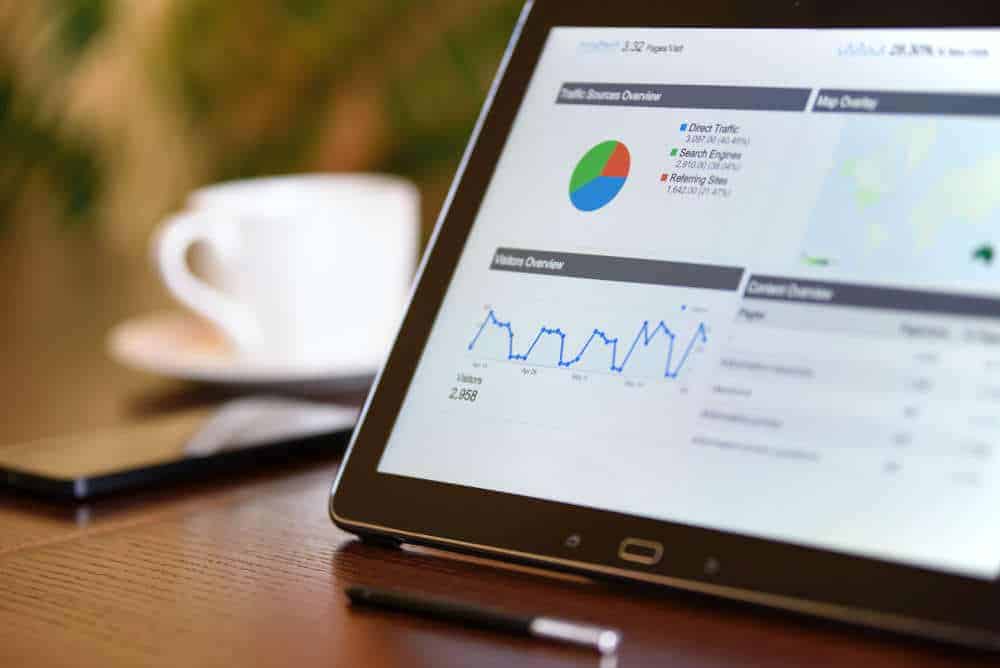We all know that digital marketing has many advantages over traditional marketing. Digital marketing is more efficient; online-based marketing strategies have a wider reach and scope compared to traditional marketing strategies. Online content can be reused and repurposed making it more sustainable than flyers, newspaper ads, and streamers. Perhaps the biggest advantage of digital over old school traditional methods is that having a website as the centerpiece of your marketing strategy allows you to track performance in real-time via Google Analytics.
Yes, we understand if the word “Analytics” can get some of you sweating or scratching your head. “Analytics” sounds like a technical term that is best reserved for experts such as web designers and IT professionals.
The truth is, you don’t have to be an IT wizard to learn and appreciate the value of analytics. And when it comes to analytics, look no further than Google Analytics brought to you by the world’s biggest search engine.
What Is Google Analytics?
For those readers who worked in Marketing in the 90s and the early part of the millennium, it must have been a challenge to get the company to invest in a marketing campaign.
The company’s key decision-maker would always pose this question:
“What is the estimated ROI on your proposed marketing strategy?”
While traditional marketing methods have a way of tracking performance such as through the use of codes and a numbering system or by identifying any significant changes in sales, these processes are largely inefficient, time-consuming, and costly.
This question, as well as other nagging ones, was answered in November 2005 when Google Analytics was officially launched.
By definition:
Google Analytics is a service provided by Google that enables businesses to track, collate, and organize data about their website such as traffic volume, amount of time spent per page, conversion rate, and visitor demographics.
With Google Analytics, you have access to data that will help you monitor and evaluate the real-time performance of your current marketing strategy. You can pinpoint weaknesses in your marketing strategy, create alternative courses of action, and implement improvements in the campaign.
What Can Google Analytics Do For My Business?
A lot!
Google Analytics removes guesswork. It helps you find the answers to the nagging questions that may have given you a few sleepless nights.
If business numbers are not good, Google Analytics gives you a fighting chance because you can identify the problems right away and work on developing immediate solutions.
Here are 5 benefits that your business can derive from using Google Analytics.
1. Develop a Keen Understanding Of Your Target Market
Your website is a data-gathering tool. It will pick up important information about your visitors that will help you understand their online behavioral patterns and collect data on their demographics.
Armed with these types of information, you can create a more accurate Buyer’s Profile. With a solid Buyer’s Profile, you can proceed to divide your market into segments and publish content that targets the right audience like a guided laser.
2. Strengthen Your Brand-Building Strategies
Knowing the types of content that your audience likes to read, the online platform they use to read your content, and the preferred device for accessing the Internet are valuable inputs you can use to fine-tune your digital marketing strategy that will build your brand.
Google Analytics gives you data-backed evidence so you can get the “pulse” of your audience. You’ll get a “feel” of who they are and have a better perspective of how to position your brand so they can get a “feel” of who you are.
3. Keep Track of Your Search Rankings
How important are the search rankings?
The first five URLs that appear on the first page of the SERP account for 67.6% of all online traffic.
And hardly anyone goes to page 2 of the SERP.
If you’re wondering why your current SEO strategy isn’t pushing your website up the search rankings, you can find the clues via Google Analytics.
4. Establish Realistic Goals
What is the goal of your digital marketing campaign?
- Do you want to build your brand?
- Are you looking to add to your number of followers?
- Are you focused on increasing the conversion rate?
Setting goals is an important step in growing a successful business. Google Analytics has a feature called Goals Overview that will allow you to keep track of your goals.
Staying on top of where you are in the pursuit of your goals will go a long way in improving your team’s level of productivity while sticking to the parameters of your budget.
5. Gain Valuable Insights On the Competition
Are you wondering about what your competitors are doing? Why are their websites ranking higher than yours? Why do they have followers and more engagements?
Wonder no more. Google Analytics has a feature that gives you valuable insights into what your competitors are doing. You have a virtual bird’s eye view of the strategies your competitors are implementing to stay ahead of you.
How To Use Google Analytics – A Guide For Intermediates
Google has always been big on User Experience or UX. The search engine giant’s algorithm frequently undergoes changes to include ranking factors designed to motivate website owners to improve UX.
Thus, it is only fair for Google to give website owners an assist by making Google Analytics easy enough for non-IT professionals – beginners and intermediates – to understand.
The key is to not be overwhelmed by the sheer number of tools made available by Google Analytics. Stick to the basics about Google Analytics then slowly increase your knowledge of its more detailed applications.
As someone who has Intermediate-level knowledge of Google Analytics, we assume that you have already set up a Google Analytics account. You must be familiar with the following actions required of Google Analytics and a few of its basic features:
- Installing the Tracking Code – A program that collects data on your website’s activity
- Setting Goals – A feature that allows you to set targets or goals for your website and informs Google if such goals were achieved.
- Site Search – A feature that enables Google to track all searches done on your website and collect important information about your visitors.
At an intermediate level, learning your way around the Audience Report will give you the keys to unlocking valuable information about your website visitors.
Whenever you open Google Analytics, you will see your Audience Overview report which is just one of 50 reports that you will have access to.
One of the first things that will catch your eye in the Audience Overview report is a graph depicting the number of sessions your visitors have undertaken. Below the graph, you will find key information about your visitors’ behavior such as:
- Number of Sessions
- Number of Users
- Pageviews
- Pages per Session
- Average Duration per Session
- Bounce Rate
- Percentage of New Sessions
By using figures provided by these data, you will be able to assess the performance of your digital marketing campaign thus far.
- Are your strategies generating more visits?
- Which types of content are your audience spending more time on?
- How many new/unique visitors are you attracting every month?
- How much time does a visitor spend on your website?
In addition to the Audience Overview, the Audience Report will give you valuable information on six factors that are crucial for developing strategies to improve your website’s performance:
- Demographics – Find out which gender and age group are primarily patronizing your website and will most likely contribute to your goal of increasing conversion rate.
- Interests – Pinpoint the topics that your audience is most interested in so you can fine-tune your content marketing strategy. If you’re thinking about investing in Pay-Per-Click advertising, the data can be helpful in targeting the groups where will you have the highest probability of converting interest into sales.
- Geo – Where are your visitors coming from and what language do they speak? These types of information will give you insights to develop more effective content writing, local SEO, and advertising strategies.
- Behavior – Data on behavior is very important because tastes and preferences are constantly changing thanks to the influence of the Internet. In this overview, you get information about the frequency of visits, time spent per visit, and the pages they frequent every time they land on your website.
- Technology – If you’re developing online tools for your business, data on technology will let you know if you should focus on Mac or Chrome-based software programs.
- Mobile – Sure, we know that 65% of online traffic comes from mobile – but can the same be said about your visitors?
Find out the breakdown of mobile, tablet, and PC users and the percentage of iOS and Android users among your followers.
For intermediate-level Google Analysts, another important feature to learn is Email Notifications.
This is a feature that allows you to receive updates on specific Google Analytics reports via scheduled emails.
Setting up Email Notifications is easy!
- Select the report that you want to be emailed to you on a scheduled basis.
- Above the report title click “email”.
- In the field titled “From”, you will find the email address that you use to log in to Google Analytics.
- Go to the “To” field, enter the email addresses you have designated to receive the data. Make sure the email addresses are separated by a comma.
- Type in the subject then select the frequency of transmission and the format to be used.
- To set the duration Google Analytics sends the report, go to “Advanced Options”.
- To work on the body of the email, go to the field “Text” and press Enter.
Then, click “Send”.
The wonderful thing about the Email Notifications feature is that you don’t have to log in to Google Analytics to get your reports. You can set the frequency that these reports are sent to you based on your convenience.
At the intermediate level, you might prefer the feature Advanced Segments to Custom Reports because you may want to be more specific and detailed in your segmentation.
With the Advanced Segments feature, you can group the data into categories so you will have a clearer picture of who your website visitors are. Once you have gotten more comfortable with Custom Reports, the Advanced Segments feature will be easier to use and understand.
Earlier in this article, we briefly discussed the importance of having data on mobile usage. The world is becoming increasingly more dependent on mobile technology. In the United States alone, 58% of all searches are done on a mobile device.
You can get in-depth data on the mobile experience your visitors are having on your website; data that can help you find the answers to the following questions:
- What keywords are my visitors using to land on my website?
- Is my website downloading fast enough for mobile device users?
- Is my website navigable on a mobile device?
- How does online behavior differ between mobile and desktop users?
- Should I optimize content based on mobile keywords?
The last feature of Google Analytics that would benefit intermediate-level users would be Profile Filters.
The Profile Filters feature adds a different dimension to segmentation. You may have some nagging questions such as “Why does mobile account for a very small percentage of our email subscriptions?”
Applying specific filters allow you to run tests on the traffic coming to your website. Profile Filters lets you customize the type of reports that Google Analytics is generating on your website so you can find possible answers to the nagging questions.
Conclusion
Be patient during the transition from beginner to intermediate level Google Analytics user. We all have different competencies and it might take some longer than others to be proficient with the more advanced features of Google Analytics.
What’s important is to use Google Analytics to pinpoint the weaknesses and flaws of your website and in your digital marketing strategies.
Google Analytics puts an end to guesswork. You have access to real-time data to help you formulate the best decisions that could change the game for your business.
If you enjoyed this article, feel free to share it with your community.
And if you are thinking of building a mobile responsive website for your business, give us a call or drop an email. We will have a high-performance, fully-optimized, and responsive website up and running for you in no time!





